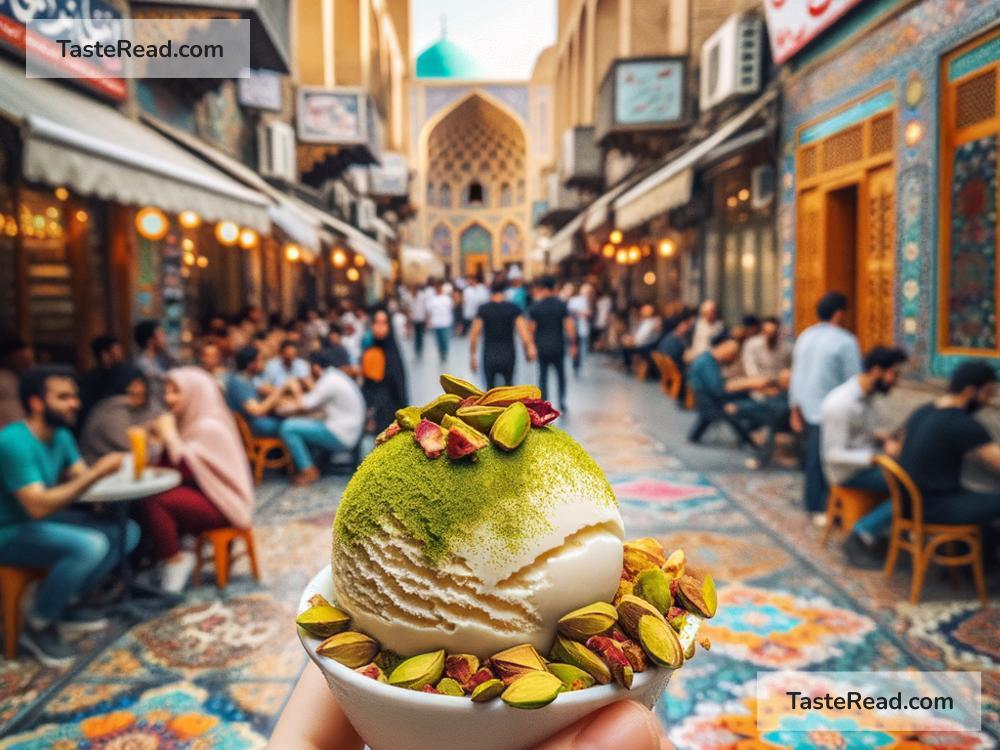Discovering the Artisan Traditions of Persian Saffron Ice Cream in Iran
Iran is a land of rich culture, ancient history, and breathtaking landscapes. Among its many treasures, one stands out for its unique flavor and handmade artistry—Persian saffron ice cream. Known locally as “bastani sonnati,” this traditional dessert is more than just a sweet treat; it is a taste of Iran’s heritage and artistry. Let’s dive into the fascinating world of Persian saffron ice cream and uncover why it holds a special place in Iranian culture.
What Makes Persian Saffron Ice Cream Special?
Persian saffron ice cream isn’t your ordinary vanilla or chocolate ice cream. It’s a dessert bursting with bold flavors, creamy textures, and vibrant colors. The star ingredient is saffron, a spice derived from the delicate crimson threads of the saffron flower, which happens to be one of the world’s most expensive spices. Iran is the largest producer of saffron globally, making this ingredient deeply rooted in the country’s culinary traditions.
Saffron gives the ice cream its warm golden-yellow hue and a distinct flavor that is floral, earthy, and mildly sweet. Combined with other key ingredients like rosewater, pistachios, and cream, Persian saffron ice cream is a harmonious blend of richness and lightness that feels like a celebration in every bite.
The History of Bastani Sonnati
The origins of bastani sonnati date back hundreds of years to Persia’s golden age. Traditionally, desserts in Persian cuisine were made not only to satisfy the palate but to create an experience. This ice cream reflects this philosophy with its carefully chosen flavors that evoke refinement and balance.
In the past, ice cream was made using natural ice sourced from mountains or created in underground ice houses known as “yakhchal.” Yakhchals were ancient Persian innovations designed to store ice and keep food cool during the hot seasons—an essential feature in regions with scorching summers.
Over time, as modern refrigeration became more accessible, saffron ice cream evolved into the creamy, delightful dessert we know today. It retained its artisan roots, with many vendors still handcrafting their ice cream using traditional methods.
The Craft of Making Saffron Ice Cream
What sets Persian saffron ice cream apart is the meticulous care and artistry that goes into making it. The process starts with steeping saffron threads in water to release their potent flavor and coloration. The saffron water is then blended with fresh cream, sugar, and fragrant rosewater that adds a subtle floral note, creating the base mixture.
To give the ice cream its chewy texture, a common ingredient called “salep” (ground orchid bulb) is often added. Salep has thickening properties that make the ice cream delightfully elastic—a unique characteristic that differentiates it from other types of ice cream around the world.
Before freezing, crushed pistachios are sprinkled into the base for added crunch, color, and flavor. Finally, the mixture is churned and frozen using traditional techniques, often by hand, to achieve the perfect smooth consistency.
Where to Enjoy Persian Saffron Ice Cream in Iran
While Persian saffron ice cream can be made at home, the most authentic experience is found in Iran’s ice cream parlors. These parlors are often family-run businesses that have passed down recipes through generations, preserving the craft and tradition.
Tehran, the capital city, is home to many famous bastani sonnati shops. One popular destination is the legendary “Akbar Mashti,” often credited with popularizing Persian saffron ice cream. Here, locals and tourists gather to enjoy the creamy saffron delight paired with “faloodeh,” a frozen noodle-like dessert made with rose syrup and lime juice.
In cities like Yazd and Isfahan, known for their rich cultural heritage, you’ll find smaller artisans making ice cream in more traditional ways. Strolling through bustling bazaars or winding streets, you can spot vendors serving saffron ice cream topped with generous scoops of pistachios. It’s not only a treat for the taste buds but also an opportunity to connect with Iranian history and hospitality.
A Symbol of Iranian Hospitality
In Iran, food is more than nourishment—it’s an expression of love, culture, and hospitality. Persian saffron ice cream is often served at weddings, family gatherings, and celebrations. Offering a bowl of bastani sonnati to a guest is a warm gesture that symbolizes generosity and friendship.
Even beyond Iran’s borders, Persian saffron ice cream has gained international attention for its exotic flavor and artisanal quality. Those who try it instantly recognize the care and passion that go into every scoop.
Bringing Persian Tradition Home
If you ever visit Iran, don’t miss the chance to savor authentic Persian saffron ice cream. It’s a gateway to understanding the country’s culinary artistry and cultural soul. Even if you can’t make the trip, saffron ice cream recipes are widely available online, allowing you to create a little taste of Iran in your own kitchen.
All you need are saffron threads, rosewater, cream, sugar, and pistachios. Though homemade ice cream won’t quite match the expertise of Iranian artisans, the fragrant and colorful dessert will still capture the spirit of this beloved tradition.
Conclusion
Persian saffron ice cream isn’t just a dessert—it’s a story of craftsmanship, creativity, and cultural pride. The delicate blend of ingredients, the handiwork that goes into making it, and its deep connection to Iranian heritage make bastani sonnati a remarkable culinary experience. If you’re searching for a dessert that’s as rich in history as it is in flavor, Persian saffron ice cream awaits your discovery.


